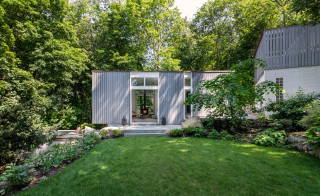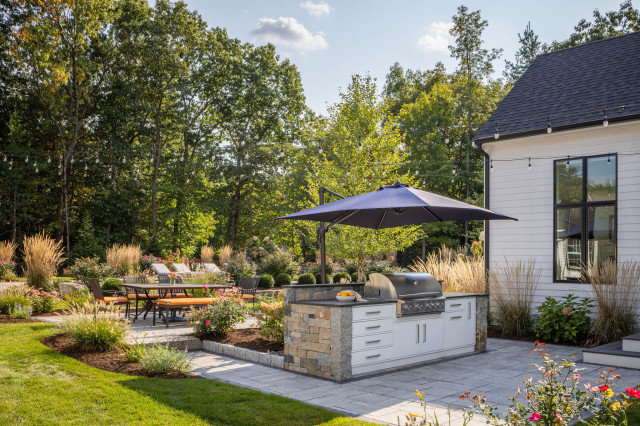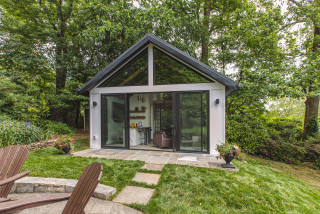
From 1947 to 1953, the architects built 28 homes on the hilly site, using modernist principles of simplicity and affordability and incorporating utopian ideas like paths between and through the properties for everyone in the community to enjoy. “All of them except Gropius designed homes for themselves to live in here. They were able to use this development as an experiment,” architect Colin Flavin says.
This home at Six Moon Hill was designed by Sarah Pillsbury Harkness, a founding partner of TAC, and built in 1949. The current homeowners, a couple with three daughters, wanted to create a studio for artistic expression, gathering and enjoying views of the surrounding forest and garden. They also wanted a carport. Flavin designed the two structures to echo the architecture of the main house and fit the sloped, rocky site.
This article was originally published by a www.houzz.com . Read the Original article here. .






The landscape design includes smart features. “We used a Sonance sound system with two subwoofers and six speakers within the garden spaces, as well as speakers in the cabana that are controlled by a home automation system,” Stucchi says. “The landscape lights, the bistro lights and the lights in the cabana are all controlled by a Lutron system app on the homeowners’ phones.”
Paperbark maples (Acer griseum, USDA zones 4 to 8; find your zone), which are multistemmed trees with beautiful bark, frame the cabana. “About a million resident wild bunnies severely limited our plant palette with their insatiable appetites for herbaceous perennials. No amount of rabbit deterrent would help us there. We tried everything,” Stucchi says.
He used trees, flowering shrubs, evergreens and grasses for structure, color and texture. These include a mix of hydrangeas, ‘Karl Foerster’ feather reed grass (Calamagrostis x acutiflora ‘Karl Foerster’, zones 4 to 9) and both Blushing Knock Out roses (Rosa ‘Radyod’, zones 5 to 11) and Knock Out roses (Rosa ‘Radrazz’, zones 5 to 11).